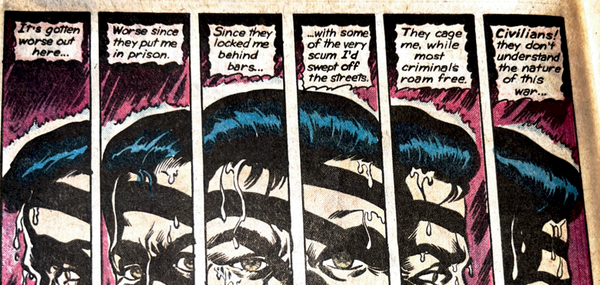What I Learned from Milan Kundera
On the importance of zeroing in on a character's truth.

Happy August!
It’s been a long summer. After a hard sprint, I finally gave a draft of my most recent novel to my editor (who is also my wife). It was hard to hand it over, knowing how much work is left to be done—but sometimes you just need another set of eyes to move forward.
As I reset creatively, I find myself reflecting on the writing of Czech author Milan Kundera, who died last month at the age of 94.
Kundera’s work has been somewhat out of fashion for various reasons. Often mentioned as a contender for the Nobel Prize, Kundera was never awarded the honor. Some suggest this was because of unverified accusations about being a one-time informant that I won’t pretend to understand.
More to the point for Western readers in the 21st century, Kundera has been justifiably accused of “androcentrism” (as Jonathan Coe put it in The Guardian ) if not outright misogyny. Or as Jen Webb, Dean, Graduate Research, University of Canberra put it, “For a 21st-century woman … his tone and style in the writing of sex scenes – and the representation of women more generally – can present as outdated masculinity. I vacillate between feeling offence at what feels like misogyny, and reading it as a searing critique of misogyny.”
Fair enough. Nevertheless, picking up The Unbearable Lightness of Being or The Art of the Novel after many years reminded me how much Kundera influenced my ideas and shook up my early understanding of what it meant to be a writer.
When I was in college, “dirty realists” like Raymond Carver were the models for workshop fiction. Carver’s prose is stripped down and relentlessly focused on evocative surface details and spare dialogue. His mostly working-class characters have limited self-awareness and struggle to articulate their feelings and motivations. His stories end ambiguously, leaving the most important things unsaid. In short, Carver (brilliantly) modeled some of the most durable clichés of writing advice. Show, don’t tell. Eliminate adverbs. Cut relentlessly.
John Gardner’s The Art of Fiction: Notes on Craft for Young Writers was the closest thing to a definitive guide on writing in those days. According to Gardner, the goal of fiction is to create a wholly immersive, “vivid and continuous dream” that completely and seamlessly envelops the reader in its world through careful attention to detail.
For Gardner, the risk of metafiction (self-conscious writing that draws attention to its own artificiality) is that it disrupts the immersive experience of reading and makes it harder to move the reader emotionally.
I took Gardner at his word, and Carver as my example. My own attempts at fiction in those years were mostly elliptical slices of life. I wrote a handful of decent pieces, but also many in which I didn’t understand what I was trying to say—or had nothing to say at all.
And then, someone handed me The Unbearable Lightness of Being.
Kundera’s writing confidently (and brilliantly) violated all of the rules of writing I had been taught. His books have few physical descriptions. Tomas lives in a flat. He meets Tereza in a small Czech town. What do the town and flat look like? Not important. What is important is the existential framework that defines each character.
Throughout Kundera’s books, an omniscient narrator inserts himself relentlessly, deliberately drawing attention to the artifice and laying out his themes explicitly. His characters may or may not understand why they do what they do, but the reader always does.
Kundera’s books don’t take sides; rather they strive to fully articulate terrible human dilemmas and contradictions. As he explained in The Art of the Novel, Kundera believed that the job of the novel was to embrace “the world as ambiguity … not a single absolute truth but a welter of contradictory truths (truths embodied in imaginary selves called characters)…to have as one’s only certainty the wisdom of uncertainty.”
The Unbearable Lightness of Being begins with a meditation on Nietzsche’s thought experiment on eternal recurrence and contrasts this idea with the German proverb, “einmal ist keinmal” (“once is never”)—suggesting that while eternal recurrence is terribly heavy idea, the idea that we only live once—that life is an endless dress rehearsal in which we never get to see the actual performance—is even worse.
From there, the novel unfolds.
“I have been thinking about Tomas for many years. But only in the light of these reflections did I see him clearly. I saw him standing at the window of his flat and looking across the courtyard at the opposite walls, not knowing what to do.”
Set against the backdrop of the Prague Spring in 1968 Czechoslovakia, The Unbearable Lightness of Being delves into the personal lives and struggles of its main characters to explore complex themes related to existence, love, fate, and the nature of human freedom. It is moving, heartbreaking, and ultimately life-affirming.
Speaking from experience, trying to imitate Kundera’s writing style wholesale is a fool’s errand. But I did learn some things.
- Rich physical detail, extensive backstory, “realistic” dialogue, and “show, don’t tell,” are only techniques—valid not for their own sake, but as ways of getting at something true.
- Gardner’s waking dream isn’t something you can achieve through verisimilitude alone.
- Aiming for the heart of things is what makes details coalesce, transforming the superficial into poignant and moving stories.
- Writing up long character dossiers is a waste of time if you don’t get at the thing that is at the heart of a particular character’s dilemma. Characters are not real people. In stories, moving characters are most easily built from a single truth—a complicated, nuanced, and contradictory truth—than from a string of piled-on details and backstory.
- Characters exist in relationships. It is only in contrast to the perspective of other characters that we understand them.
These are the things that make our most beloved characters feel most real—even when the author is there on the page, reminding us over and over again that they are not.
Until next time …



